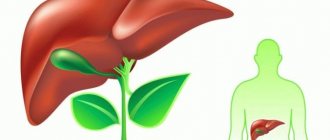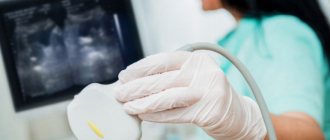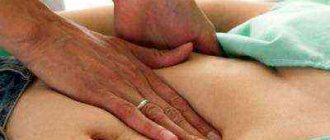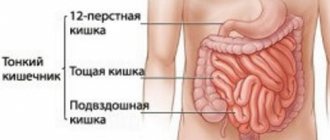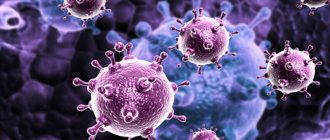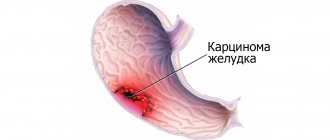The liver is a vital and largest organ of the human body, taking an active part in digestive and metabolic processes. In addition, it is a kind of filter for purifying the blood of toxins. Minimal disruptions in the functioning of this body can lead to very serious consequences. Therefore, everyone should know the symptoms of a diseased liver.
Causes of liver disease
In medical practice, a distinction is made between functional and organic disorders in the liver.
The occurrence of functional pain is associated with external factors. Among them are:
- poisoning;
- overeating (in particular, excessive indulgence in fatty, fried and high-cholesterol foods);
- alcohol intoxication and those caused by medications;
- overvoltage.
In some cases, pain can be caused by acute or chronic stress. Such situations are characterized by an implicit and not constant pain syndrome, but periodic, depending on the impact of negative factors.
It is not difficult to get rid of functional disorders; they can be easily corrected with the help of diet and eating medicinal foods.
Organic lesions cause more serious diseases that not only affect the liver, but also lead to changes in it. Such pathologies can appear in both women and men. These include:
- cirrhosis;
- ascites;
- acute and chronic hepatitis;
- fatty liver;
- cysts;
- abscesses;
- tumors.
Liver failure
Acute liver failure differs in the speed of development. The disease can develop rapidly, literally in a few days, but if treatment is started on time, then all changes are reversible. The chronic form develops gradually, over several weeks or months, but in the presence of irritating factors (alcohol or drug abuse, physical fatigue, etc.), hepatic coma may develop.
There are 3 stages of development of hepatic coma:
- Stage I – symptoms do not appear or are minor;
- Stage II - general clinical symptoms occur: weakness, upset stomach, possible swelling;
- Stage III - metabolism is disturbed, dystrophy of the liver and other internal organs is detected.
The first signs of a diseased liver
The presence of many liver diseases is indicated by a number of signs reflected on the human body or face. If such manifestations are not ignored and you do not consult a doctor in a timely manner, you will be able to avoid the development of serious problems. Even in the early stages, it will be useful to incorporate traditional methods of treating the liver with blue and red onions.
On the face
- The whites of the eyes turn yellow, and it is quite easy to see the change in shade.
- Changes occur in the general condition of the skin on the face - it becomes dry or excessively moist. In addition, a large number of acne appears.
- A characteristic manifestation is the appearance of age spots and spider veins.
On the skin
- All human skin becomes yellowish.
- The sudden appearance of age spots on any part of the skin is evidence that the dermis is trying to take over some functions of the liver.
- Overall, the skin looks unhealthy and lifeless.
- You may notice the appearance of wen all over the body.
Other symptoms
In addition to external manifestations, a person with liver pathology may experience other signs:
- fatigue, loss of performance;
- lack of appetite;
- the appearance of a protruding abdomen is an indicator of accumulated fluid in the abdominal area;
- The shade and structure of the hair may change, the weakness and fragility of which becomes clearly visible;
- at night the person sweats a lot;
- in some cases, insomnia appears;
- the patient is left with a feeling of bitterness in the mouth, and a yellow coating appears on the tongue.
- A patient with liver pathology often develops intolerance to excessively fatty foods.
Important! Any manifestations of this kind, especially in a child, must be responded to and not delayed in going to the clinic.
Nervous system disorders
In both acute and chronic liver pathologies, the body slows down the process of neutralizing ammonia, which enters the systemic bloodstream and causes a variety of neurological disorders. Some are detected only during specialized psychometric testing of patients, while others are noticeable and very alarming, because they indicate progressive hepatic encephalopathy, which can result in coma and death. Patients develop:
- unexplained fatigue;
- decreased performance;
- insomnia;
- change in sleep patterns (if you experience irresistible drowsiness during the day, followed by a sleepless night, this may be the very first sign of a serious hepatic encephalopathy);
- restlessness or lethargy;
- drowsiness (even to the point of lethargy);
- trembling of fingers (combined with a change in the patient’s usual handwriting);
- memory impairment;
- personal changes;
- constant general weakness;
- confusion or absent consciousness;
- convulsions;
- epileptic seizures.
How does the liver hurt?
The liver itself is not equipped with pain receptors; they are located only in the fibrous membrane that covers this organ. As the size of the liver increases, it begins to put pressure on the membrane. As a result, patients with pathologies of this vital organ begin to feel dull pain. If the pain is cramping and acute, then this indicates abnormalities in the activity of the biliary tract, or cholelithiasis.
If the liver hurts, then the feeling of discomfort is not necessarily localized in the area of the right hypochondrium, where the organ itself is located, but often radiates to other areas of the body or may even blur.
Liver pathologies may be accompanied by:
- dull or acute painful manifestations under the ribs on the right side;
- the pain can be pressing or pulling;
- a feeling of discomfort arises after consuming fatty, spicy, fried, or alcohol-containing drinks.
Important! If a person’s liver begins to hurt, and no matter what the cause of the pathology is, there are symptoms that always appear. These include belching with the smell of a rotten egg, nausea, bloating, and abnormal bowel movements.
Digestive disorders
The liver naturally belongs to the digestive system; it is in it that bile is formed. Therefore, it is not surprising that with liver diseases, disruptions in the gastrointestinal tract are observed. Patients are concerned about:
- discomfort, heaviness, a feeling of “overwhelming”, pain in the right hypochondrium (symptoms are often caused by concomitant changes in the motility of the biliary tract; the liver itself rarely hurts);
- nausea;
- diarrhea or constipation;
- discoloration of stools, accompanied by dark urine and jaundice;
- sweetish or “fishy” odor from the mouth (a ominous indication of increasing liver failure).
Some patients complain of an increase in abdominal circumference; it is not associated with excess gas formation, but occurs due to the accumulation of fluid in the abdominal cavity due to cirrhosis or vascular diseases of the liver (ascites). Other patients first notice that their trousers have become too small at the waist or that they have to move their belt buckle. Ascites is often accompanied by swelling of the legs.
Diagnosis of liver diseases
A patient with obvious manifestations of liver disease is prescribed a special examination. First of all, using a special device, the appearance of the organ is examined. In this way, it is possible to notice even the most minor changes in its shape, color, and structure.
Analysis of such changes will help the doctor make an accurate diagnosis.
Important! Diagnosis at home and self-treatment of liver diseases can cause irreparable harm to the body.
Hormonal shifts
Changes in hormone synthesis are more noticeable in male patients (especially with alcoholism). Feminization is characteristic of patients with alcoholic (up to 80%) and viral (up to 15%) cirrhosis. It is believed that alcohol can cause testosterone and other androgens (male hormones) to transform into estrogens (female hormones), which explains the changes that occur:
- gynecomastia (breast enlargement);
- change in hair type;
- testicular atrophy;
- impotence;
- disappearance of libido.
Some liver diseases (primary biliary cirrhosis, etc.) lead to an increase in parathyroid hormone and its derivatives, which affect bone structures. These patients experience:
- bone pain;
- spontaneous fractures;
- bone deformities (usually flat bones).
In addition, chronic liver pathology (for example, hepatic steatosis) can cause diabetes.
Types of syndromes
It is worth considering several types of main syndromes in liver diseases. Each of them indicates a specific pathology.
The following types of syndromes are distinguished:
- Cytolytic – disruption of hepatocyte membranes (up to 80% of the liver mass).
- Liver damage from toxins.
- Cholestasis is a lack of bile production.
- Inflammatory liver syndrome is impaired liver function.
- Hepatocellular failure.
Each of these conditions indicates specific disorders in the liver . They are identified using laboratory tests. The main clinical features of certain syndromes vary.
Cytolytic
Cytolytic syndrome indicates that the membranes of hepatocytes (the main cells of the liver) are damaged. This organ response to damage is caused by tissue death. As a result, the constituent elements of the cells enter the blood. There are 2 stages of the syndrome:
- necrobiosis,
- necrobiotic.
At the first stage, organ damage is reversible. Only morphological abnormalities are observed.
The causes of cytolysis are acute and chronic hepatitis and cirrhosis, starvation, shock, and tumor-like formations of the liver. Cytolysis develops under the influence of such factors:
- Regular alcohol intoxication. The pathology is caused by ethanol abuse.
- Taking medications that have hepatotoxic effects.
- Damage to hepatocytes by hepatitis viruses A, B, etc.
- Impaired production and transportation of bile pigments.
- Parasitic liver diseases.
- Enzyme deficiency, autoimmune processes.
If the syndrome is not complicated, the mitochondrial structures are slightly damaged. In advanced cases, liver damage with destruction of organ cells is possible. There is a high risk of developing organ tumors.
Laboratory syndromes in chronic hepatitis include cytolytic, liver failure, liver inflammation and cholestasis.
Cholemia
Cholemia syndrome is the consequences of self-poisoning. It can develop with jaundice. As a result of the tests, the accumulation of bile components in the blood is revealed. The liver suddenly stops performing its detoxification function.
This hepatic syndrome is very similar to cholestasis. The main manifestations include severe jaundice. The size of the liver rapidly decreases due to tissue necrosis. The development of nervous disorders is possible. Hallucinations may occur.
Other consequences:
- cholemic bleeding - manifests itself when blood clotting deteriorates,
- hepatic coma,
- hemorrhagic diathesis is an increased tendency of the body to bleed.
Blood may come from the gums and nose. Patients often become depressed. Sleep is disturbed, the skin begins to itch. The diagnosis can only be made after a blood test.
Cholestasis
Cholestasis is a pathological condition of the liver in which insufficient bile is produced. This is due to two reasons - either the liver cells stop performing their function, or the flow of bile through the ducts stops.
Important! There are two types of cholestasis - intrahepatic and extrahepatic.
In the first case, the bile canaliculi are affected and the biliary function of hepatocytes is disrupted. In this case, bile components accumulate in hepatocytes. Extrahepatic cholestasis syndrome occurs when it is impossible for bile to flow through the common and hepatic ducts.
This syndrome occurs with biliary hypertension. It is associated with the inability to conduct bile along the drainage pathways. As a result, the interlobular ducts expand.
The clinical signs of this hepatic syndrome include itching, jaundice, dark urine, discoloration of stool and skin pigmentation.
Inflammation in the liver
When diagnosing an inflammatory syndrome, we can talk about the activity of pathology in the biliary organ. Signs that appear during the disease include:
- fever,
- vosculitis is a group of diseases characterized by inflammation of blood vessels,
- arthralgia - joint pain,
- jaundice,
- enlarged spleen.
An inflammatory syndrome occurs as a result of immune inflammation in the liver.
The list of causes for the development of pathology includes liver diseases, occurring in both acute and chronic forms.
Jaundice
This disease is not independent. Symptoms include yellowing of the skin and sclera. Such signs appear in many pathological processes in the liver.
The main reason for this condition of the body is the accumulation of a special substance called bilirubin. It appears after the breakdown of red blood cells.
Adults with the development of this pathology may experience severe skin itching. The stool becomes greyish. The patient loses his appetite and feels severe pain in the right hypochondrium.
The sound of jaundice is an important indicator of the development of the disease . The intensity of the sensation depends on the type of pathology. With obstructive jaundice, the most severe itching occurs. Often the sensation of scabies becomes unbearable, which leads to insomnia and exhaustion of the nervous system.
With hepatic jaundice, the skin does not itch as much. The sensation appears because the nerve endings of the skin are irritated as a result of the penetration of bile acids into the blood.
Consequences of jaundice:
- intoxication of the body with bilirubin,
- brain damage, manifested in hearing impairment, paralysis and convulsive states,
- diarrhea and severe swelling.
Jaundice is a serious pathology that must be treated at the first manifestations.
Portal hypertension
The syndrome develops when it is impossible for blood to pass through the liver, which is directed to it through the splenic and portal veins. In this case, liver edema or cirrhosis develops. The portal vein is compressed by the tumor, the lymph nodes become enlarged.
The following symptoms appear:
- bloating,
- rumbling,
- loss of appetite,
- nausea,
- pain in the navel area.
The pressure in the veins of the abdominal cavity increases significantly . If blood enters the inferior vena cava, hemorrhoidal bleeding occurs. In case of varicose veins of the lower part of the esophagus, bleeding is possible.
If the umbilical veins dilate, blood enters the subcutaneous vessels of the peritoneal wall. A specific pattern of veins is observed in the patient’s shoulders, forearms, and chest.
Pathology develops in accordance with certain stages. Stages of portal hypertension:
- Initial. At this stage of development of the pathology, patients complain of heaviness in the right hypochondrium, general weakness, and flatulence.
- Moderate. Symptoms at this stage include flatulence, early satiety, nausea, and a feeling that the stomach is full. At the same time, the spleen and liver enlarge
- Expressed. There is fluid in the abdominal area. All signs of portal hypertension are clearly expressed.
- Complicated. At this stage, varicose veins begin to bleed. Ascites develops (fluid accumulation in the peritoneum), which is very difficult to treat.
these stages of the syndrome, so at the first signs of the disease it is important to seek help.
Among the causes of portal hypertension are:
- thrombosis of the portal and splenic vein,
- compression of the portal vein by tumor-like formations,
- increased blood flow in the portal vein.
Such reasons are identified during examination of the patient.
Hypersplenism
This syndrome is characterized by increased spleen function. Often a painful condition occurs when the liver is not functioning properly. It is in this organ that blood components are destroyed.
As a result of the development of the disease, the spleen breaks down more platelets, red blood cells and leukocytes. Anemia (anemia) occurs.
An increase in the activity of the spleen is not always associated with an increase in the size of the organ. Therefore, “hypersplenism syndrome” should not be confused with the concept of “splenomegaly syndrome.”
Pathology occurs in patients with cirrhosis and hepatitis. It can also be caused by storage diseases (metallism disorders).
Important! This syndrome is potentially fatal. This is due to the high risk of developing sepsis (general blood poisoning).
Hepatocellular failure
Hepatic cell failure is characterized by impaired liver function. The symptoms of this pathology are very pronounced. The outflow of bile is significantly reduced. The liver does not function sufficiently, and the cells of the organ die. One of the most pronounced clinical manifestations is the development of jaundice. How intensively it proceeds depends on the degree of damage to the biliary tract.
When the pathology progresses to the chronic stage, this symptom may not appear. Other symptoms are also observed:
- death of organ tissue,
- fever,
- stool discoloration,
- increased heart rate,
- pressure changes.
Biochemical liver damage also occurs. As the disease progresses, the nervous system also suffers. This is due to a violation of the general cleansing function. The patient may be very lethargic and drowsy, or, conversely, excitable. Possible loss of consciousness, cramps of the arms and legs, nausea. The patient complains of fluid accumulation in the peritoneal area.
With the help of modern biochemical blood tests, it is possible to assess the pathological process in the liver and identify certain laboratory syndromes. They reflect the various processes occurring in the organ and allow us to judge its functions.
Since the liver is actively involved in metabolism, such conditions should be treated when the first signs appear. This will help avoid serious consequences. If left untreated, some diseases can be fatal.
What nutrition is indicated for patients?
Patients are advised to treat diet no less responsibly than medications. Food can both improve the situation by normalizing bile secretion, digestion, reducing the load on the liver, and provoke an exacerbation of the disease by excessively entering the blood of fats and alcohol.
Therefore, all spicy and fatty foods should be excluded from the diet of a sick person. The patient will have to adhere to dietary table No. 5 according to Pevzner for a long time (possibly all his life). You need to drink up to 2 liters of fluid daily. The following juices are contraindicated: tomato, grape, orange.
You only need to cook using the method of boiling, steaming, stewing; housewives know how to adapt kitchen equipment
Which doctor should I contact?
If problems with the liver occur, you should contact a gastroenterologist. However, many patients do not know that it is the liver that is affected; we advise them to visit a therapist and undergo routine tests, including a biochemical blood test. If liver disease is confirmed, it can be treated by a hepatologist, as well as an infectious disease specialist (for viral hepatitis), an oncologist (for liver or biliary tract cancer). Considering the damage to various organs and systems, additional consultation with a neurologist, dermatologist, hematologist, or endocrinologist may be required.
The hepatoprotector Esslial Forte has proven itself well as a component of complex treatment of liver diseases. It is a combination of phospholipids that fully correspond to the phospholipids of liver tissue, but exceed them in terms of their content of essential fatty acids. The integration of such phospholipids into damaged areas of liver cell membranes helps restore their integrity and promotes regeneration. The product does not contain synthetic additives, dyes, and does not cause allergic reactions.
A nutritionist will help you choose the right diet for liver disease. Alcoholic liver disease is an indication for treatment by a narcologist. Finally, serious complications, such as bleeding from esophageal varices, are treated by a surgeon. In diagnosing liver diseases, the qualifications of doctors of diagnostic specialties - endoscopist, ultrasound diagnostics doctor - are of great importance.
Source


